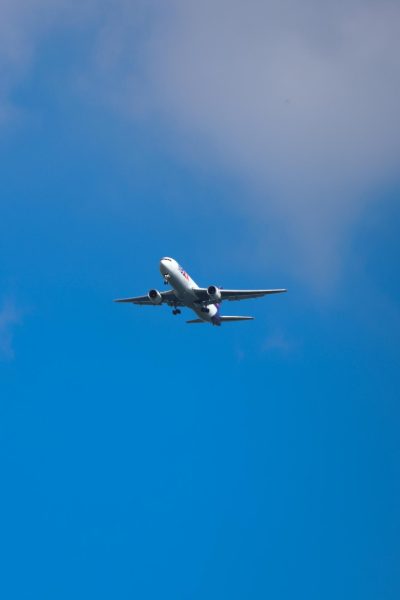Miami International Airport Implements Detection Dogs
September 15, 2021
In late August, Miami International Airport (MIA) implemented a new, 30-day pilot program that uses dogs to sniff out COVID positive employees. This makes it the first airport in the United States to test virus-sniffing canines.
The two dogs, seven-year-old Belgian Malinois Cobra and seven-year-old Dutch Shepherd One Betta, spend their Mondays, Wednesdays and Fridays from 11 a.m. to 3 p.m. on post at MIA. While on duty, the pair of dogs inspect employees at a security checkpoint. Voluntary American Airlines staff members remove their masks, allowing the canines to sniff and potentially detect the virus. The dogs sit when they detect the odor of COVID-19. The individual must then take a rapid COVID test before returning to work.
Prior to the pilot program, the dogs underwent a special training program hosted by the Global Forensic and Justice Center at Florida International University at the Modesto Maidique campus. The researchers at FIU trained the canines to detect the virus’s scent by using face masks from patients who had tested positive for COVID. COVID-19 causes metabolic changes in an individual, resulting in the production of volatile organic compounds most commonly found in one’s breath and sweat. These compounds produce a scent that trained dogs can smell, ultimately allowing for the detection of the virus.
The canine pair averaged 96 to 99 percent rates for detecting the virus — the same range as a polymerase chain reaction (PCR) test. Individually, One Betta’s accuracy rate was 98.1%, while Cobra’s reached 99.4%.
Before the dogs’ work at MIA, One Betta and Cobra previously worked for Florida Gov. Ron Desantis in the emergency operation center, where they searched for COVID-contaminated surfaces. The pair also provided assistance at the South Beach Food and Wine Festival, searching for people possibly carrying the virus.
The pair was specifically selected for this program based on their performance on a similar assignment, where they had been originally trained to detect laurel wilt, a commonly-found fungus in plants that kills avocado trees. According to a trainer at FIU, the dogs only took a couple of weeks before fully adapting to the new scent and becoming proficient in picking it out.
Similarly, in August 2020, Dubai International Airport and Helsinki Airport tested COVID-19 detection dogs. The dogs never came in contact with the patients, but instead sniffed a sample provided by passengers collected upon arrival by health officials. These samples consisted of an underarm skin swab for the collection of sweat.
Overall, detector dogs are not new. At MIA, agencies have already used detector dogs to sniff out prohibited drugs, explosives and currency. At airports in general, detection dogs often sniff passengers and carry-on items at any given security checkpoint to ensure passenger safety. If a passenger or crew member reports a suspicious incident once aboard a plane, the detector dog will then sniff the aircraft and its passengers. The detector dogs signal a scent with a sitting motion to alert the handler.
Outside of airports, professionals have trained these dogs to detect individuals with a multitude of diseases, including cancers, epilepsy and diabetes. With 50 times as many smell receptors as a human, a dog’s sense of smell is 10,000 to 100,000 times sharper than that of the average person. An individual possesses around six million receptors in one’s nose, whereas dogs carry up to 300 million olfactory receptors.
Although the program was initially intended to run from Aug. 23 through September, the Miami-Dade Aviation Department and Board of County Commissioners have extended the project for an extra 30 days to collect more data. The program currently screens only staff and employees. However, if proven successful, the program plans to extend into busier parts of the airport.










